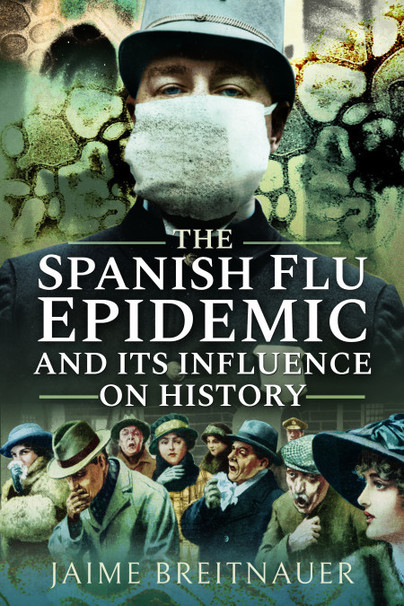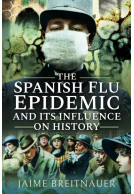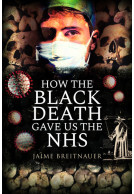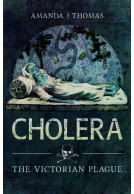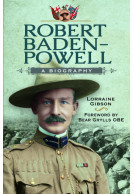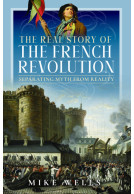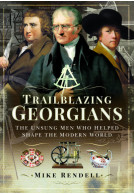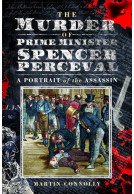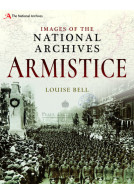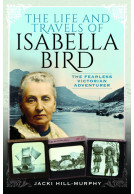The Spanish Flu Epidemic and its Influence on History (Paperback)
Imprint: Pen & Sword History
Pages: 160
Illustrations: 32 black and white illustrations
ISBN: 9781526766427
Published: 11th November 2020
Last Released: 1st September 2021
(click here for international delivery rates)
Order within the next 8 hours, 6 minutes to get your order processed the next working day!
Need a currency converter? Check XE.com for live rates
| Other formats available | Price |
|---|---|
| The Spanish Flu Epidemic and its… Hardback Add to Basket | £19.99 |
| The Spanish Flu Epidemic and its… eBook (7.4 MB) Add to Basket | £6.99 |
In Budapest, a lone woman dies quietly on a bench in the late afternoon sun, while in South Africa, a group of men plunge to their death in the blackness of a mine shaft elevator. In London, a loving father takes his daughter’s life while in Austria a man grieves for his unborn baby trapped inside his dead wife’s body. In Western Samoa, entire villages are wiped out in a matter of days and in India, the river Ganges becomes clogged with bloated corpses and the pungent smell of disease …
This is not some post-apocalyptic future, but the reality of Spanish flu, which claimed the lives of around 100-million people globally between 1918 and 1920. Often overshadowed by the tragedy of the Great War, this book walks us through the lives of some of the victims, discusses the science behind the disease, and asks, what will the next pandemic look like?
Rating: 5 out of 5 stars
NetGalley, S Ballinger
Well written account of the pandemic and a warning to us all of how easily it can spread.
I read this during the recent pandemic
The the flu of a hundred years ago was spread by travel and human contacted and put huge strain put on doctors, nurses ,families and ended in millions of deaths across the world. It's scary to see the similarities between what is going on in our world today and what happened over 100 years ago.
This book was completed in 2019 but I read it in 2020 in the middle of the coronavirus pandemic. I mention that because there was an element of déjà vue in the narrative.
Doncaster & District Family History Society
I found this book fascinating as the author explores the possible sites of origin of the virus and the approach taken by individuals, a number of governments and health authorities to deal with it. Living at a time when so much information is public and we have daily access to conflicting opinions about how the pandemic should be managed, this book describes in detail a very different approach taken a century ago.
I was particularly interested in the topic as I have an ancestor who died of the Spanish Flu in 1918. The author explores how the virus spread across the world and mutated to bring waves of new cases. It also considers the impact this epidemic had on the First World War and how information was restricted. A really good book; well worth a read.
The 'lockdown' of 1918: Schools closed, buses and trains cancelled, people self-isolating and the PM struck down with the dreaded virus... how Britain's Spanish Flu crisis has stark similarities with today
Mail Online 23/03/21
As featured by
The Essex Family Historian
Written before the arrival of the COVID-19 pandemic, the author could not have guessed how timely her book would be.
Family History Society of Cheshire
Review by Eric Probert
The newsletter of the North Weald Airfield Museum Association
Through contemporary personal accounts in particular of the lives of the victims, this book pro- vides an understanding of the reality of the spread of this epidemic which claimed the lives of around 100 million people worldwide between 1918 and 1920. We discover it's effects and legacy of public healthcare in communities around the World.
I had this book to review on my pile for a while and the coronavirus outbreak did both put me off reading it, and also intrigued me to a degree as I often wondered how the Spanish Flu came to fruition and how the managed to control the outbreak over 100 years ago with them having nowhere near the scientific breakthroughs, medication and information we have now.
NetGalley, Donna Maguire
The book is well laid out and I liked the way that the book was written. Some of the chapters for me were really addictive, especially at the outset as I was craving more from the first few pages and the author managed to answer a lot of the questions I had straight away.
The sections on Alaska and how fast the virus spread there and the aftermath were shocking and to see towns decimated in that way must have been horrific, I was also appalled at the response regarding what they said needed to happen with the orphaned children too, it really was a different time back then but some of the inhabitants of the towns survived and they could easily have all been wiped out.
I also was intrigued by the author’s links between the pandemic and the rise of Hitler out of the ashes of the Germany economy that had been pretty much ruined after the Great War – another thing that has left me wondering and what the author has put forward, for me is entirely plausible too – it does make you think about how one action and the absence of Woodrow Wilson could have ultimately changed the world.
It is 4 stars from me for this one – definitely a book that has given me food for thought especially in the current coronavirus pandemic we are all going through - they do say history repeats itself.
As featured by
Essex Branch of the Western Front Association
Though this was written before the current pandemic it's unbelievably similar to what's going on right now.
NetGalley, Deanne Patterson
Detailing the Spanish Flu Epidemic right from the start with the first person infected,how it was spread from country to country and the numbers of those infected. It lasted for years as well with no vaccine. Masks were required back then and in some areas people got arrested for not wearing them. Human nature doesn't change though and some fought against wearing it just like today.
Just like today the numbers were incredibly high with those infected and deaths reported of course not all deaths were reported and all cases were not know for the cause of death.
Very informative and interesting . We should all give a thank you to our health care workers who go above and beyond at the cost of not seeing their families for periods of time and at the risk of their own health. Thank you health care professionals!!!!
Rating: 5 out of 5 stars
NetGalley, Amanda Kenney
This book has a lot going for it, and I would recommend it for use in the classroom. I have already recommended it to friends who teach at the college level, and am considering using a portion in one of my courses. Something inferred, but not often directly discussed, is the role of imperialism in the experience and aftermath of the flu. There's a great assignment there that I havent fully formed yet.
I'd also recommend it to armchair historians or people newly interested because of COVID.
Breitnauer covers a lot of space in not a lot of pages, including not only the US and Europe, but also China, Japan, Samoa, New Zealand, Australia, South Africa, Alaska, and more. Each chapter starts with a vignette of a specific person. Although citations are light, the material is accurate. There are also references to source material such as in this person's memoir, that person's letter, etc. There is some conjecture, but most of it is realistic and grounded. We may not have record of someone feeling weak or wiping sweat from their brow, but we know the symptoms of this flu or that the person was standing in a sun in a wool suit in summer.
Rating: 5 out of 5 stars
NetGalley, Gillian Shackleton
It feels very apt to have read this book at a time when we are experiencing the largest pandemic in our lifetime. It is a great read, meticulously researched, and somehow feels doubly relevant in today's climate. I thoroughly enjoyed this book, and would heartily recommend it.
All in all this book is a fascinating read. I thoroughly recommend it!
NetGalley, Heather Rogers
Rating: 5 out of 5 stars
NetGalley, Julia Simpson-Urrutia
The Spanish Flu Epidemic and its Influence on History is full of such gripping human interest details, showing how people we know for whatever reason were forever affected by a virus that showed no discrimination.
This is a timely and comprehensively researched book which all politicians, and health directors, should read. Although harrowing, it is a compelling tale.
NetGalley, Lisa Sanderson
Rating: 5 out of 5 stars
NetGalley, Ethan Longhenry
A great overview of the 1918-1920 H1N1 pandemic and its effects.
This short book is strong on the scale and the human impact of the pandemic.
Historical Novel Society, reviewed by Edward James
As a pharmacist working through this pandemic, this book brought about lots of feelings for me. Both from a reader standpoint and a science standpoint. Oh how we wish we learn from the past! We know what works and what doesn’t. But in this day and age how can we not have learned. All the information must be shared and shared honestly with everyone, especially doctors and scientists. Let’s read this book and relearn what happened during the flu pandemic.
NetGalley, Jennifer DiCenzo
Rating: 5 out of 5 stars
NetGalley, Anneke Van Couvering
This is a very detailed look at the Spanish Flu of 1918. How it got started and how it eventually moved all around the world, killing millions and millions of people. To this day, it’s not known where or how the Spanish Flu started.
The book is well written, but it is basically a highly detailed science book. What I found alarming is that not much has changed since the Spanish Flu and the COVID-19 pandemic we’re not going through. Back then, no one even knew what a virus was. Scientists thought the Spanish flu was caused by a bacterial infection. At least we now know about viruses, virology and epidemiology.
Though COVID is so complex and shape-shifting that researchers and clinical physicians still don’t understand the virus that well yet.
Some similarities I saw between the two pandemics: the lack of central management working to fight the diseases. Just as today, each state is on their own to deal with COVID. Just as now, politics gets in the way of science, so it did in 1918-1920.
I remember when I was about 13, spending an afternoon with my grandmother, and she told me she had had the Spanish flu. She must have been about 20 years old. She said she was very sick, but recovered.
So, if you are into reading about the minutiae of the Spanish Flu, how it moved from country to country, how the population was decimated, this might be interesting. I was a bit overwhelmed by the detail, and discouraged to see how little has changed in how we deal with a pandemic. Because human nature is human nature and that certainly would not have changed in a century.
I give the book 5 Stars, highly recommended for those who like to read science.
The book is hard to put down. Breitnauer puts a human face on the Spanish flu by recounting personal stories of the people affected -- not just famous historical figures like Woodrow Wilson and Mohandas Gandhi, but also soldiers, doctors, workers and children, the common folk who suffered its effects even more strongly -- even as he describes the relentless spread of the disease and its devastating impact on the world. It's true that the virus contributed significantly to the end of World War I, but it's startling to realize how it also fostered the conditions that caused World War II.
Rambles
It's also fascinating to watch the global response to the disease. In many nations, it led directly to more accessible and affordable healthcare -- while, disturbingly, in the United States there was denial and fear, but healthcare remained out of reach (to this day) for its citizens as many leaders refused to impose basic restrictions to curtail the spread of the disease.
Prophetic indeed.
This book is valuable as a detailed look back at a terrible time in history, when a virulent flu spread all over the world, infecting a third of its people and killing many -- reports vary, from 50 million to 100 million. Perhaps it's not too late to learn the harsh lessons the Spanish flu can impart.
Read the full review here
Rating: 5 out of 5 stars
NetGalley, Brenda Carleton
This fascinating book could not be more timely...parallels between the 1918-1920 Spanish Flu and present Covid-19 epidemic are uncanny from the fear of the unknown sinister killer to societal reactions to quarantine. The last sentence before the epilogue is chilling as this book was written before the current pandemic.
In March of 1918 a man with a cold became person zero as the first known/recorded carrier of what rapidly grew to pandemic proportions. The author of this book takes us into real lives of those who witnessed it or contracted it around the globe. She then writes about its effects on politics, health and societies. Some regions suffered unimaginable losses of up to 20+% of the population. Seeing the horror through their eyes is gut wrenching.
Symptoms were often sudden with quick deaths just hours later as dead bodies were found on buses, trains and park benches. Yet others suffered longer. Those hardest affected were in the ages 10-40 category. Healthy strong bodies literally attacked themselves which meant soldiers and others serving in the war. It is said approximately 5% of the world's population died. The effects on many countries were devastating, including higher prices and starvation and entire families wiped out.
So much to learn from this book from scientific studies including DNA to naming flus to antigenic drift to how different cultures reacted to what happened to the dead bodies.
Finally people realized isolation and masks made a huge difference. Some regions fined people for not wearing them. The Spanish Flu disappeared after it had come in several waves and caused incomprehensible sorrow and economic ruin.
Do read this if at all interested in comparing and contrasting the Spanish Flu to our current pandemic and if you wish to learn about science behind flus. Not only that but put yourself into the places and minds of others who have...and are...suffering. I highly recommend this compelling and well-researched read.
As featured on Lost Cousins
Lost Cousins
This book is very timely, not just in being written for the centenary of the Spanish Flu Pandemic but in coinciding with the Chinese Wuhan 19 Pandemic. The author has provided a detailed review of the Spanish Flu, with its impact on war and society, and the many unanswered questions. – Most Highly Recommended.
Firetrench
Read the full review here
It is exceptionally well written to the point I would call it a page turner – it gives the facts without sounding overly academic or pretentious – and let me tell you, it’s made me want to learn more about the Spanish Flu pandemic. More – I’m not sure I would say it’s negative – it has made me think a lot more about our current predicament, the mistakes that have been made and continue to be made. The second wave of the Spanish Flu was far more virulent and it honestly has me wondering whether we will end up experiencing the same with the current Covid-19 crisis.
The Borgia Bull
A great read and highly recommended.
Read the full review here
Honestly, this is a really good introduction to the Spanish Flu pandemic and its ongoing influence. I could tell the author has a history background and a journalism background too. She made the book very easy to read and the use of real people examples really brought the events of those years to life.
Rosemarie Cawkwell, Blogger
Read the full review here
Here's one for those of you worrying about the coronavirus. This is an excellent little book about the Spanish Flu Epidemic after World War One, a subject I hadn’t really visited since the days of university. The book looks at various different ‘causes’ or reasons for the epidemic because at the end of the day, nobody really knows anyone major reason for why it happened. But it is likely to be a number of reasons, some of which are explained in this book by Jamie Breitnauer. The book looks at the effects of WWI, the large scale movement of soldiers around the world, the trade between varying nations, and immunity etc. The book is very well written and the points of argument are excellent. The author has written well in the various points and allows the reader to come up with their own opinions. The book also has excellent notes, and bibliography at the back to enable further reading. An excellent book very well written.
UK Historian
The Spanish Flu was a devastating epidemic that claimed the lives of hundreds of thousands of people all across the world. With so many people falling ill at the same time in different countries, it's impossible to know where this sickness started. In the midst of WWI, the countries at war couldn't admit they were affected, or risk appearing weak to their enemies.
Lillian Bailey
With personal stories that tug at your heartstrings, the author paints a picture of a world, already ravaged by war, taken down by a mysterious virus affecting soldiers and civilians and making the war even harder to fight. This book is a must for anyone studying the First World War, or the spread of sicknesses, or anything related.
I remember reading that more people died as a result of contracting Spanish 'flu than died in the Great War. Jaime Breitnauer puts the whole thing into perspective with a fascinating account of the origin and extent of the outbreak, at a time when people were returning from the conflict expecting a brave new world and instead confronting one of the deadliest epidemics ever to hit mankind.
Books Monthly
This volume is well-written and intentioned... this volume may be of interest to Sociologists and Historians of various persuasions. Readers with an interest in unusual ‘Medical’ events might also find it of interest, as might those with an interest in their national histories and the impact that the ‘Flu had on their countries.
Keith Rimmer, NZ Crown Mines
A book that deserves to be read for its powerful emotional charge, especially in a world like ours, even "smaller" (and therefore more open to the dangers of contagion) than that of our 1919 predecessors'.
Old Barbed Wire Blog
Read the full Italian review here
Reviewing this book as the Coronavirus is making its way around the world is a sobering exercise. Timing being everything in life, it is a book that needs to be read to really understand the modern context of such outbreaks. In most respects the modern outbreaks share with the Spanish flu the relatively easy transmission through travel. The world in 1918 was one mighty supply chain servicing the Great War for Civilisation and consequently influenza found its way to all corners through that route. Today we see lessons learnt; flights suspended, cities in lock down and much concentration on finding a form of medication to fight it. The latter was not available in 1918 but the advance in science may find it. This book uses examples of survivors and the succumbed to explain how the 1918 pandemic grew, developed, infected and killed arguably 100 million people. A shocking insight into Spanish Flu but a very good read.
Michael McCarthy
Michael McCarthy. Battlefield Guide
About Jaime Breitnauer
Jaime Breitnauer is the author of The Spanish Flu Epidemic and its Influence on History. She has a degree and MA in History from the University of Warwick and a particular interest in how disease and healthcare affect social development. When not writing books she works as a journalist, has two children and divides her time between Bristol and New Zealand. How the Black Death Gave Us the NHS is her second book.







